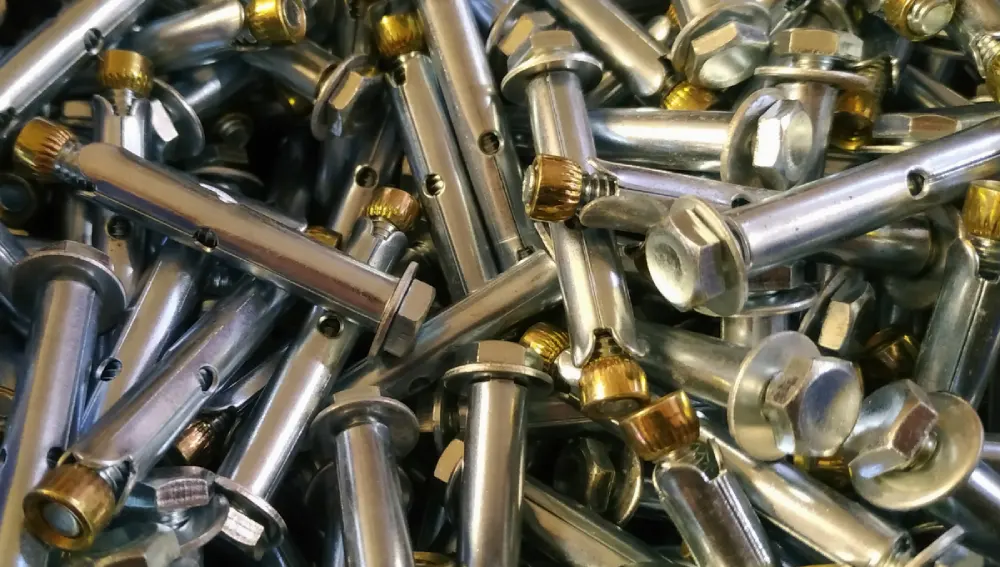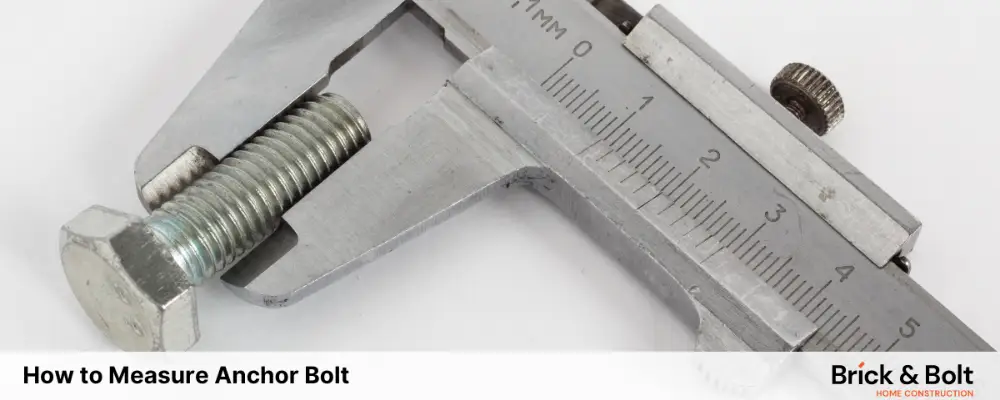Anchor bolts play a crucial role in all construction and engineering projects. They enable a strong and secure connection between structures and their foundations. Among the list of solutions, the anchor bolt stands ahead as a versatile one. They provide exceptional support and stability to a building.
However, the performance of the anchor bolt joints is often underestimated. In reality, the precise measurement of bolts helps efficiently hold machine frames to foundations.
In this guide, you’ll learn the step-by-step process of measuring anchor bolts and the tools needed for doing so.
Anchor Bolt Measurement Methods
To accurately measure the anchor bolts, here are the methods to follow:
Calculate Using Measuring Tape
The length and diameter of the bolt are the primary requirements you need to begin with.
- Length: To estimate the accurate length, place the measuring tape from the end of the bolt to the beginning of the thread.
- Diameter: The width of the bolt can be measured using a measuring tape or a caliper.
Embedment Depth
Embedment refers to the depth at which the anchor bolt is drilled into the concrete. In general, when installing mechanical expansion anchors, anchors are placed at the bottom of the drilled hole. It may range between 4da to 5da.
For a perfect estimation, make use of this formula:
Embedment depth = base material thickness + required clearance
- Material thickness – This term refers to the thickness of the concrete or masonry, as the application depth is crucial for determining how deep the bolt needs to be placed.
- Required Clearance – When installing an anchor bolt inside the concrete, a certain space is needed to ensure it is secure. It typically depends on the type of bolt and the amount of weight required to hold.
Determining Anchor Bolt Length
In order to estimate the anchor bolt length, follow the below instructions as well:
Formula:
Minimum bolt length = tfix + l. s,min
Maximum bolt length = tfix + l. s,max
tfix – the thickness of the fixture
l. s,min and l. s,max – the minimum and maximum length of the bolt
There are two different factors influencing the bolt length:
- If a bolt is too short that might not fit perfectly to the thread sleeve. This situation causes the thread of the sleeve or the thread of the bolt to wear out or break.
- If the bolt is too long, it might come to the point of contact before it’s fully screwed in. In such a case, the bolt is hard to move further and may break the anchor’s sleeve.
Verify the Hole Size
When drilling the holes to screw in the anchor bolts, ensure using a drill bit gauge to verify that its size is appropriate to the anchor bolt diameter. This will prevent the drill size from being either too small or too large.
Key Factors to Keep in Mind When Installing the Anchor Bolt

A proper installation is key to achieving the enhanced effectiveness and overall stability of the structure. Follow these considerations without fail to avail various benefits:
- Use Longer Bolts: Longer bolts allow for maximum stretch, which is essential to achieve the desired tension. Additionally, it prevents the surface of the block from tensile stresses and terminations. When enlarging the cone of compression, they can effectively spread out and cover more area. With this technique, the anchor is expanded to a large part of the material and makes the area stronger.
- Wrap the Bolt: To make the anchor bolt stronger and more durable, it is recommended to wrap or cover it along its length. This practice prevents the bolt from cracking between the concrete and the bolt. It also provides possible free stretch length to the anchor bolt, holding intended loads and force effectively.
- Add a Space: Providing a small space around the top of the bolt makes it more stable. This adjustment allows the bolt to bend a little if needed, which helps connect it to a frame easily.
In a Word
Accurate measurement of anchor bolts offers enhanced safety and durability to the structures. With the aforementioned methods and formulas, you can measure the bolts and select the appropriate components that fit your application. This process includes a lot more crucial factors such as load-bearing capacity, exposed length and base material. It may vary for every construction project, but it is recommended to consult the manufacturer’s guidelines before installing.
FAQs
Determining the accurate measurement of anchor bolts ensures the safety and structural integrity of a building. Inappropriate measurements will typically cause potential failure, safety hazards, and weakened connections between the bolt and the concrete.
Here are the costly mistakes you need to be aware of when measuring anchor bolts:
Inaccurate embedment depths
Wrong measurement of length or diameter of anchor bolt
Failed to analyze load-bearing requirements
Neglecting to consider base material properties
* Minimum Bolt Length: The minimum anchor bolt length provides efficient embedment and load-bearing capacity.
* Maximum Bolt Length: The maximum acceptable length helps avoid interference with structural elements or other components.
Regular inspections are recommended for structures that particularly exist in harsh environmental conditions or after applying significant loads. If you notice any signs of damage or excessive water leakage, then replace it immediately.

